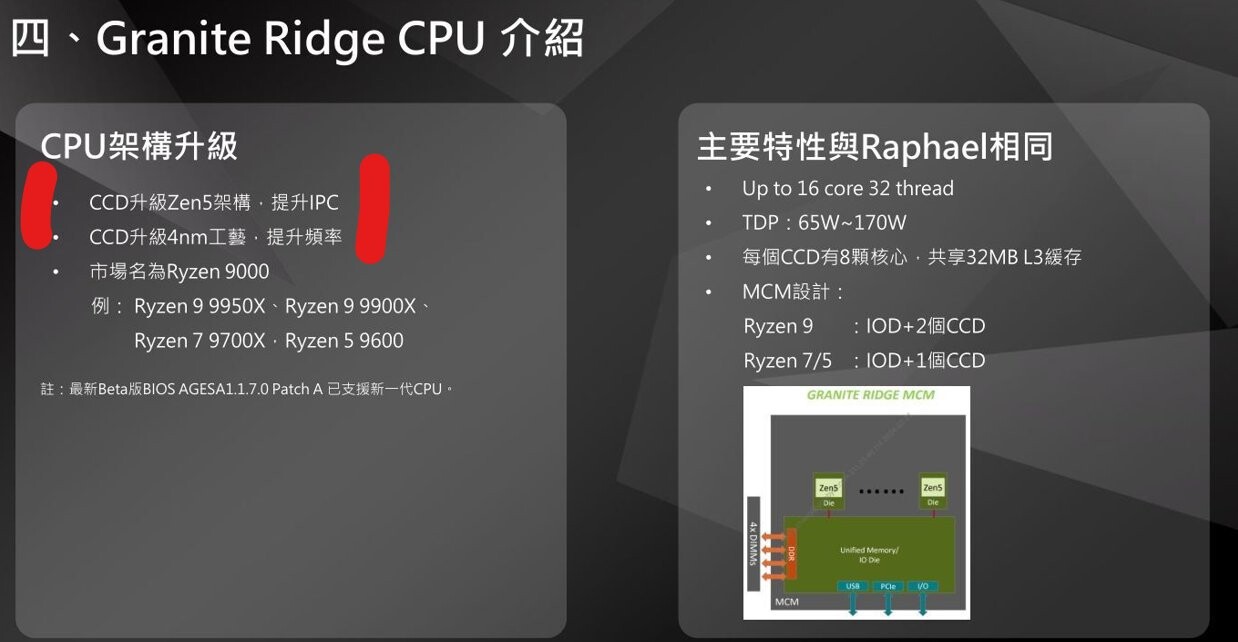An alleged company slide by motherboard maker GIGABYTE has revealed some interesting details about the upcoming AMD Ryzen 9000 "Granite Ridge" Socket AM5 desktop processor powered by the "Zen 5" microarchitecture. According to the leak, the "Zen 5" common CCD used on "Granite Ridge" desktop processors and future EPYC "Turin" server processors will be built on the 4 nm EUV foundry node by TSMC, an improvement from the 5 nm EUV node used for the "Zen 4" CCD. This new node may be the same one used for AMD's "Phoenix" and "Hawk Point" mobile processors.
It is likely that AMD will continue to use the client I/O die (cIOD) from the "Raphael" processor, which is built on the TSMC 6 nm DUV node. The cIOD includes a basic iGPU based on RDNA 2 with 2 compute units, a dual-channel DDR5 memory controller, and a 28-lane PCIe Gen 5 root complex, along with other SoC connectivity features. Rumors suggest that AMD will increase the native DDR5 speeds for "Granite Ridge" compared to "Raphael." Each "Zen 5" CCD will have a maximum of 8 CPU cores, and the "Granite Ridge" processor can have up to 2 CCDs, resulting in 16-core, 12-core, 8-core, and 6-core SKUs across the Ryzen 9, Ryzen 7, and Ryzen 5 brand extensions.
The leaked slide also reveals the first four SKUs that AMD plans to launch. The Ryzen 9 9950X is expected to be a 16-core/32-thread chip, followed by the Ryzen 9 9900X with 12 cores and 24 threads, the Ryzen 7 9700X with 8 cores and 16 threads, and the Ryzen 5 9600 (non-X) with 6 cores and 12 threads. TDP ranges from 65 W for the Ryzen 5 9600 to 170 W for the top Ryzen 9 chips, similar to the Ryzen 7000 series.
